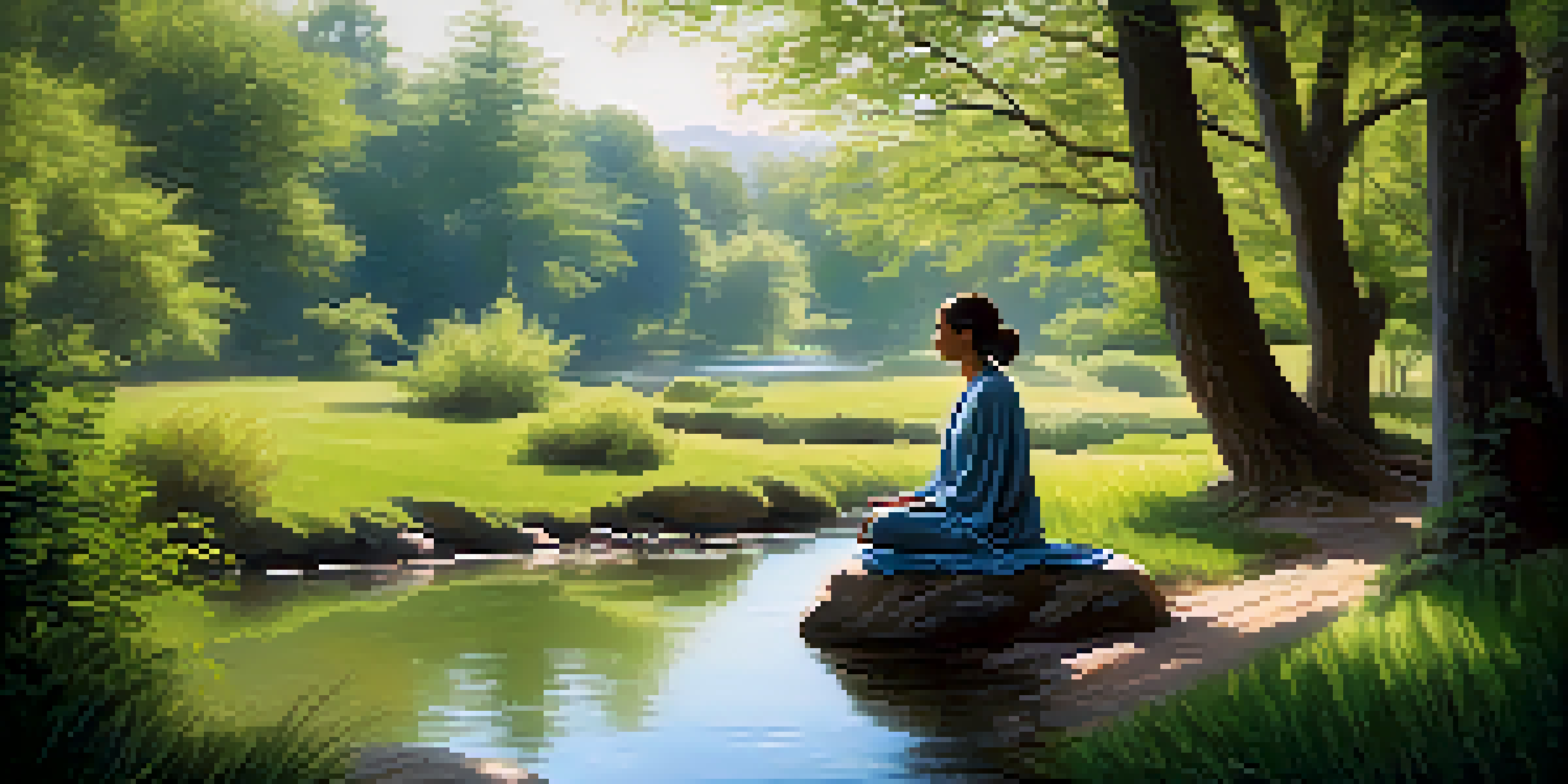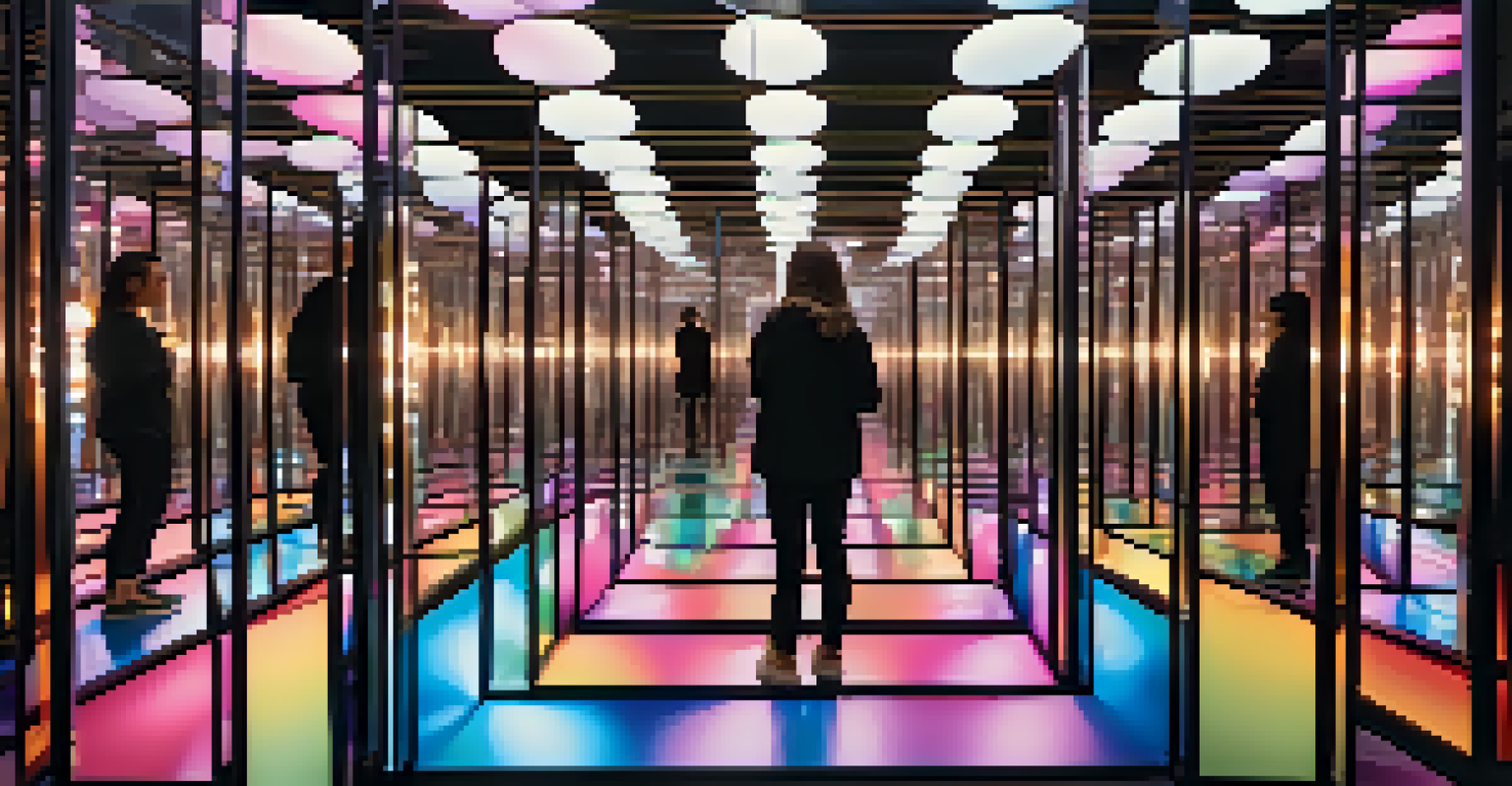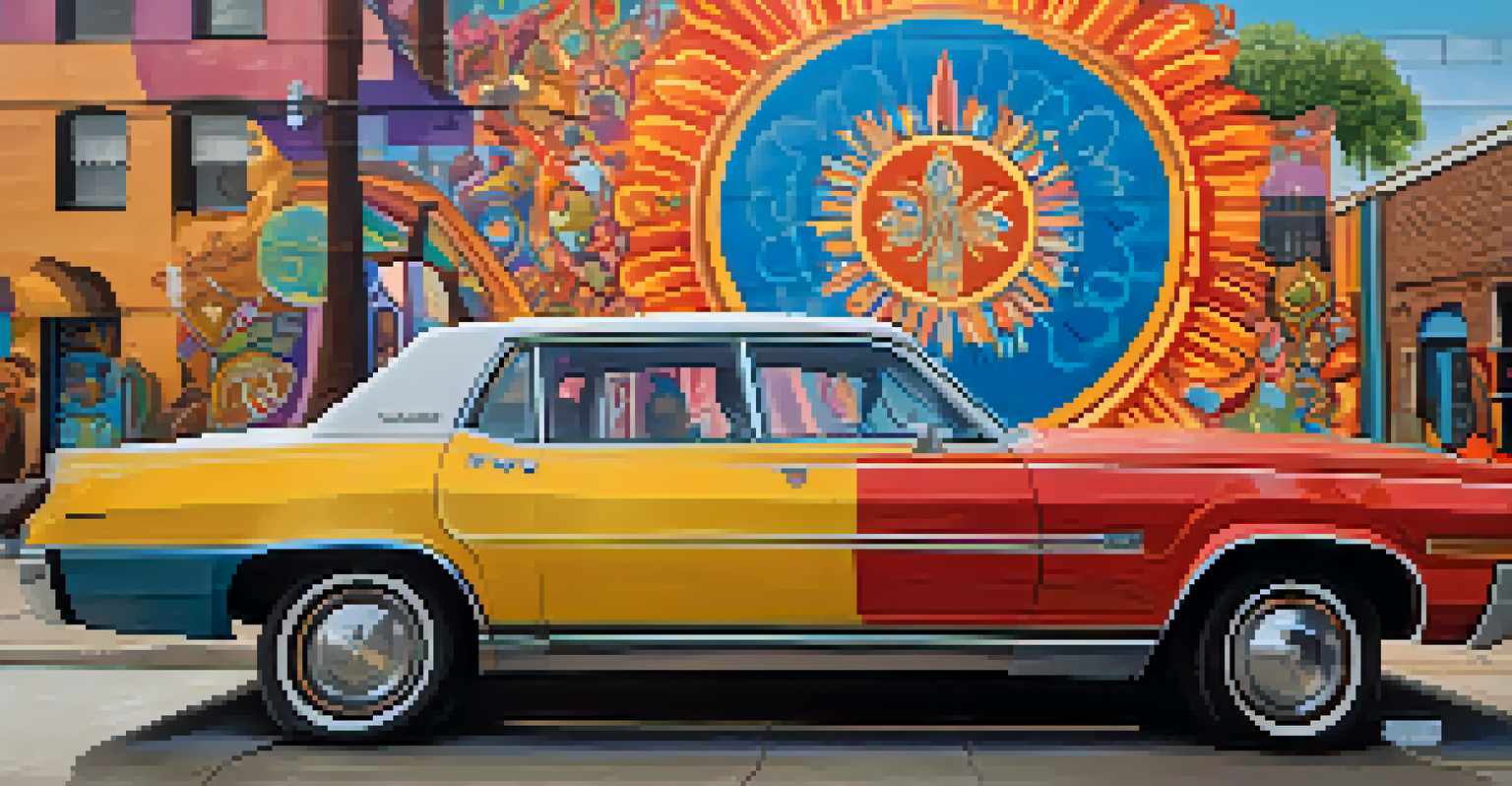Exploring Spirituality Through the Lens of Modern Art Forms

Understanding Spirituality in Today’s Context
Spirituality is often seen as a personal journey, transcending religious boundaries. In modern times, it embraces diverse interpretations, allowing individuals to explore deeper meanings in life. This broader perspective encourages a blend of ancient wisdom with contemporary experiences, fostering a unique spiritual identity for each person.
Art is a spiritual path, a way of expressing the inexpressible.
For many, spirituality is about connection—whether to oneself, others, or the universe at large. This connection can be deeply personal, often expressed through various forms of art that resonate with our inner selves. As we navigate our spiritual paths, art becomes a medium through which we can visualize and articulate our experiences and emotions.
In this exploration, modern art stands out as a powerful tool. It challenges traditional norms and invites viewers to question their beliefs and perspectives, making spirituality accessible and relatable. By engaging with art, we can uncover layers of meaning that inspire reflection and growth along our spiritual journeys.
The Role of Modern Art in Expressing Spiritual Themes
Modern art captures the essence of spirituality through vibrant colors, abstract forms, and innovative techniques. Artists often draw from personal experiences, translating their spiritual quests into visual narratives that invite interpretation. This approach allows viewers to connect with the artwork on a deeper level, prompting them to explore their own spiritual beliefs and feelings.

Take, for instance, the use of color in a painting. Bright hues can evoke feelings of joy and enlightenment, while darker shades may represent introspection or struggle. These emotional responses can lead individuals to reflect on their own spiritual journeys, making art a compelling conduit for personal exploration.
Art as a Spiritual Exploration Tool
Modern art serves as a powerful medium for individuals to explore and articulate their personal spiritual journeys.
Moreover, artists like Yayoi Kusama and Mark Rothko have created pieces that resonate with themes of infinity and transcendence. Their works encourage viewers to ponder their existence within the universe, effectively bridging the gap between art and spirituality. By engaging with these themes, we can find a sense of belonging and purpose in our own lives.
How Installation Art Invites Spiritual Reflection
Installation art offers an immersive experience that can evoke profound spiritual reflection. These large-scale works often transform spaces, allowing viewers to step inside a different world where they can contemplate their thoughts and feelings. This shift in environment can lead to a deeper connection with one’s spirituality, as the physical space encourages introspection.
Spirituality is not a destination, but a journey of self-discovery.
Consider an installation that utilizes mirrors and light. As visitors move through the space, their reflections multiply, symbolizing the interconnectedness of all beings. This experience can serve as a powerful reminder of our shared humanity and the spiritual ties that bind us together, prompting a sense of unity and belonging.
By engaging with installation art, individuals are not just passive observers; they become active participants in their spiritual exploration. This interaction encourages a dialogue with the artwork, fostering a deeper understanding of oneself and one’s place in the world. In this way, installation art becomes a transformative medium for spiritual growth and insight.
The Intersection of Technology and Spirituality in Art
In today's digital age, technology and art are increasingly intertwined, creating new avenues for spiritual expression. Artists are using virtual reality, augmented reality, and digital installations to explore complex spiritual themes. This tech-savvy approach allows for interactive experiences that can deepen our understanding of spirituality.
Imagine stepping into a virtual environment that simulates a serene landscape where you can meditate or reflect. Such experiences can transport individuals to tranquil spaces, providing an escape from the chaos of daily life. By incorporating technology into art, creators open up new pathways for spiritual exploration, making it more accessible than ever.
Community and Spirituality in Street Art
Street art reflects the collective spirituality of communities, fostering dialogue and connection among individuals.
Moreover, digital art can reach a global audience, fostering cross-cultural dialogue about spirituality. As artists from different backgrounds share their perspectives through technology, we gain insight into diverse spiritual practices and beliefs. This exchange enriches our understanding of spirituality, encouraging a more inclusive and open-minded approach in our own journeys.
How Street Art Reflects Community Spirituality
Street art is a vibrant form of modern expression that often reflects the collective spirituality of a community. Artists use public spaces to share messages that resonate with local experiences, addressing social issues, identity, and hope. This form of art transforms ordinary environments into canvases of inspiration, evoking a sense of belonging and shared values.
Murals, for example, can depict spiritual symbols, community stories, or cultural heritage, inviting onlookers to engage with their surroundings. These artworks not only beautify urban landscapes but also spark conversations about spirituality and identity. By walking through neighborhoods adorned with street art, individuals can feel a sense of connection to the community and its collective spiritual journey.
In this way, street art serves as a reminder that spirituality is not just an individual pursuit; it's also a shared experience. It encourages dialogue among community members, fostering a deeper understanding of one another's beliefs and values. Ultimately, street art becomes a powerful medium for exploring and celebrating the spiritual essence of a community.
Performance Art as a Spiritual Journey
Performance art provides a dynamic platform for exploring spirituality through movement, expression, and storytelling. Artists often use their bodies as instruments of communication, conveying deep emotions and spiritual themes that resonate with audiences. This form of art invites viewers to engage with the performance on a visceral level, fostering empathy and reflection.
Consider a performance that incorporates rituals or meditative practices. As the artist embodies these experiences, the audience is drawn into a shared space of contemplation. This connection can lead to personal insights about spirituality, prompting viewers to reflect on their own practices and beliefs. The ephemeral nature of performance art adds to its potency, as each experience is unique and fleeting.
Future Trends in Spirituality and Art
Emerging trends in modern art are integrating spirituality with social and environmental consciousness, encouraging deeper reflections on existence.
Moreover, performance art often challenges societal norms, pushing boundaries and inviting critical reflection. By addressing topics such as identity, faith, and community, artists provoke discussions that can deepen our understanding of spirituality. Through this interactive engagement, performance art becomes a powerful catalyst for personal and communal spiritual exploration.
The Future of Spirituality in Modern Art
As we look to the future, the relationship between spirituality and modern art continues to evolve. Artists are increasingly exploring new mediums and technologies, opening up fresh dialogues about the nature of existence and our place in the universe. This evolution invites us to rethink our perceptions of spirituality and how it can be expressed in diverse ways.
Emerging trends, such as eco-art and socially engaged practices, are reflecting a growing awareness of our interconnectedness with the planet and each other. Artists are using their platforms to advocate for sustainability and social justice, integrating spirituality into their work in meaningful ways. This shift encourages audiences to consider how their spiritual beliefs align with their actions in the world.

Ultimately, the future of spirituality in modern art promises to be rich and multifaceted. As artists push boundaries and explore new ideas, they invite us to join them on this journey of discovery. By engaging with modern art, we can continue to deepen our understanding of spirituality, fostering a more profound connection to ourselves, others, and the world around us.